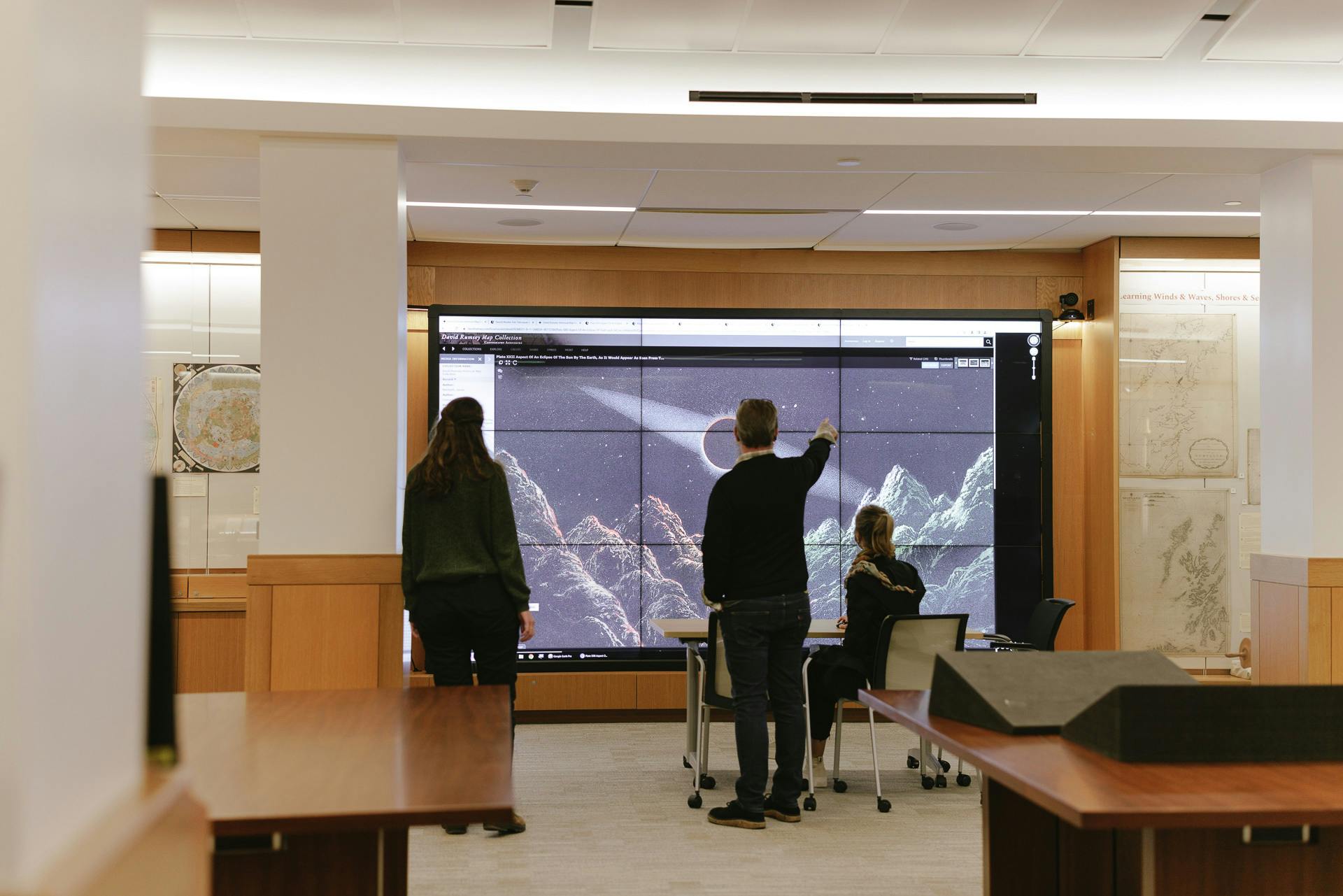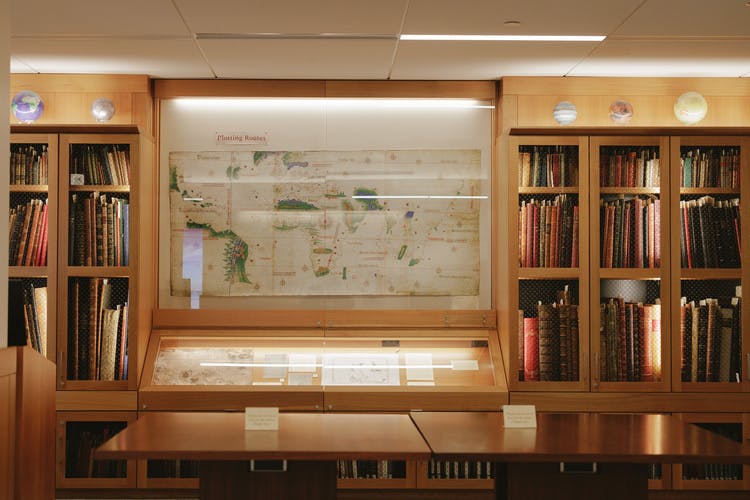David Rumsey Map Center
About us
We are the premiere historical cartographic collection on the West Coast and hold one of the world’s great collections available for public research and global digital access. The collection numbers in the hundreds of thousands of digital and physical objects, with new acquisitions added on a weekly basis.
The center is also an exhibition space with a dynamic lineup of shows that feature cartographic materials. Two wall-sized screens are available for viewing maps and metadata in detail. We periodically host conferences, talks, and events. Our map librarians provide consultations and support for researchers, classes, and the public.
Using the center
We encourage visitors to drop in during open hours. All visitors to the center need to register upon entry.
Students and scholars from outside of Stanford should contact the staff with inquiries before they make their plans. Let us know what you are interested in.
Because we are home to rare maps, we do not allow ink or food and drink in the center. Laptop devices are welcome, and pencils and paper are available for note-taking. Photos without flash are also encouraged. Lockers are available for stowing your belongings.
Visitors interested in viewing physical items need to request items through SearchWorks in advance of their visit. Once your materials are ready, you will be notified by email confirming your appointment. You may view up to five items at a time.
Learn more about access to Stanford's rare and distinctive materials.
Research support
Featured collections
David Rumsey Collection
View items in SearchWorksView high-resolution scans that showcase the breadth of the David Rumsey Map Collection, including atlases, globes, school geographics, maritime charts, pocket maps, wall maps, and manuscript maps.
Maps of Africa
Go to the exhibitStanford Libraries is home to a strong collection of maps of Africa, including maps donated by Oscar I. Norwich and Caroline Batchelor as well as maps from the Barry Lawrence Ruderman Collection, the University of Cape Town Collections, and the David Rumsey Map Collection.
Glen McLaughlin Map Collection of California as an Island
View items in SearchWorksThe first mention of California as an island is in Garci Rodriguez de Montalvo’s novel Las Sergas de Esplandián, published in 1510. It was not until Father Eusebio Kino’s map A Passage by Land to California was published around 200 years later that this cartographic blunder was exposed. Containing nearly 800 maps, materials in this collection range from hemispheric to world maps, from title pages to celestial charts, all depicting California as an island.
Meet the staff
Events
Spheres of Influence: Projecting Power and Fear Onto the Globe
Exhibition4/2/2025April 2, 2025 - April 30, 2025Mapping Time, Space and Habitat: a talk by Dr. Ben Gitai
Lecture/Presentation/Talk5/1/20253:30 PM - 4:30 PM PDT
Accessibility
Patrons with limited mobility can take the Bing Wing elevator to the fourth floor.











